2 min read
The Untold Economic Story of the Year: How Loyalty Programs Beat Inflation
The economic story of 2022 has been around one word: inflation. But there’s a second story that has remained under wraps: how loyalty programs keep...
Platform
What is Paytronix Guest Engagement Suite?
Combining online ordering, loyalty, omnichannel messaging, AI insights, and payments in one suite. Paytronix delivers relevant, personal experiences, at scale, that help improve your entire digital marketing funnel by creating amazing frictionless experiences.
A Complete Guest Engagement Suite
Online Ordering
Acquire new customers and capture valuable data with industry leading customization features.
Loyalty
Encourage more visits and higher spend with personalized promotions based on individual activity and preferences.
Catering
Grow your revenue, streamline operations, and expand your audience with a suite of catering tools.
CRM
Build great customer relationships with relevant personal omnichannel campaigns delivered at scale.
Artificial Intelligence
Leverage the most data from the most customer transactions to power 1:1 marketing campaigns and drive revenue.
Payments
Drive brand engagement by providing fast, frictionless guest payments.
Solutions
Paytronix Guest Engagement Solutions
We use data, customer experience expertise, and technology to solve everyday restaurant and convenience store challenges.
FlightPaths are structured Paytronix software onboarding journeys designed to simplify implementation and deliver maximum ROI.
Customer Success Plans (CSPs) are tiered service offerings designed to help you get the most from your Paytronix software, whether you prefer self-guided support or hands-on partnership.
Contactless Experiences
Accommodate your guests' changing preferences by providing safe, efficient service whether dining-in or taking out.
Customer Insights
Collect guest data and analyze behaviors to develop powerful targeted campaigns that produce amazing results.
Marketing Automation
Create and test campaigns across channels and segments to drive loyalty, incremental visits, and additional revenue.
Mobile Experiences
Provide convenient access to your brand, menus and loyalty program to drive retention with a branded or custom app.
Subscriptions
Create a frictionless, fun way to reward your most loyal customers for frequent visits and purchases while normalizing revenues.
Employee Dining
Attract and retain your employees with dollar value or percentage-based incentives and tiered benefits.
Order Experience Builder
Create powerful interactive, and appealing online menus that attract and acquire new customers simply and easily.
Loyalty Programs
High-impact customizable programs that increase spend, visit, and engagement with your brand.
Online Ordering
Maximize first-party digital sales with an exceptional guest experience.
Integrations
Launch your programs with more than 450 existing integrations.
Loyalty Programs
Deliver the same care you do in person with all your digital engagements.
Online Ordering
Drive more first-party orders and make it easy for your crew.
Loyalty Programs
Digital transformations start here - get to know your guests.
Online Ordering
Add a whole new sales channel to grow your business - digital ordering is in your future.
Integrations
We work with your environment - check it out
Tobacco Reporting
Comply with AGDC 2026 DTP Requirements
Company
We are here to help clients build their businesses by delivering amazing experiences for their guests.
Meet The Team
Our exceptional customer engagement innovations are delivered by a team of extraordinary people.
News/Press
A collection of press and media about our innovations, customers, and people.
Events
A schedule of upcoming tradeshows, conferences, and events that we will participate in.
Careers
Support
Paytronix Login
Order & Delivery Login
Resources
Paytronix Resources
Learn how to create great customer experiences with our free eBooks, webinars, articles, case studies, and customer interviews.
FlexPoint Service Catalog
Access FlexPoints are a cost-effective, flexible way to access our value-added services, to ensure you get greater impact from your Access software solution.
See Our Product In Action
E-Books
Learn more about topics important to the restaurant and c-store customer experience.
Reports
See how your brand stacks up against industry benchmarks, analysis, and research.
Blog
Catch up with our team of in-house experts for quick articles to help your business.
Case Studies
Learn how brands have used the Paytronix platform to increase revenue and engage with guests.
Unlock loyalty strategies that 3 out of 4 restaurants use to boost engagement by 40% without adding staff.
2 min read
Jul 05, 2022
The risk of poor reviews may cause some establishments to shy away from digital ordering. While this is a legitimate concern, there are proven strategies restaurants and c-stores can implement to bounce back from a poor review and solidify customer loyalty.
Paytronix has published The Order & Delivery Report 2022, which details this trend and the data surrounding it. This blog and the ones that follow will highlight findings from that report, as well as sheds new light on recently acquired data.
It’s important to consider the potential implications of a review. Not surprisingly, customers who give the restaurant or c-store a rating of 4.9 or higher are most likely to return. While 1-star ratings may not be the most pleasant to receive, they’re not necessarily indicative of a customer’s behavior, as customers who leave 1-star ratings are as likely to return as those who leave a 2.4-star rating. Customers leaving a 1-star review may be acting in the heat of the moment or reacting without consideration, or may even be leaving simple reviews to speed through the process. Reviews with more nuance are typically written with more scrutiny.
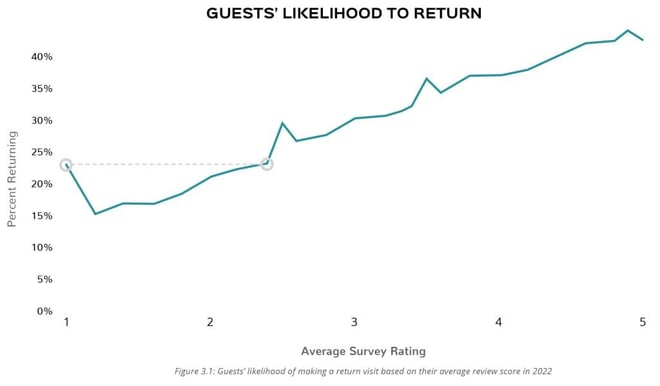
The best indicator of whether a patron will return is if they received exemplary food, service, and value. Customers who give 5-star reviews in those particular categories are the most likely to revisit, and the three categories correlate with likelihood to return almost exactly.
However, as the ratings drop, value becomes more important than both food and service. At 1- and 2- star ratings, customers are more forgiving of poor food and service experiences than they are if they feel their dollar was not well-spent. Customers require high marks across the board to give an establishment a top rating, but they will be satisfied knowing they got their money’s worth even if the food and service are marginal.
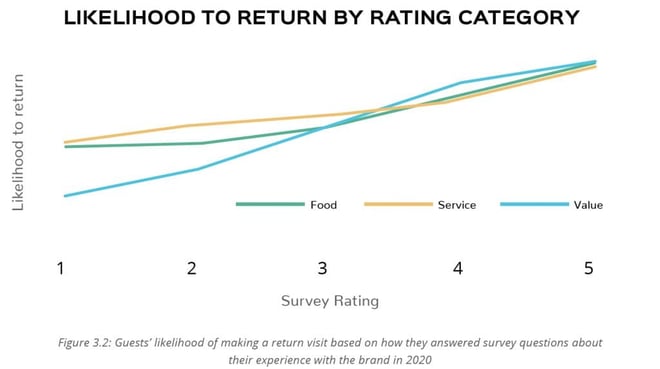
A poor review should be viewed as an invitation, not a dismissal. Our data indicates restaurant and c-store operators can provide positive guest experiences in the wake of a bad review. To salvage the guest relationship after a less-than-stellar review, offering a coupon may be the best move a restaurant or c-store can make. Not only does it improve the chance a guest will return, but the marketing investment for this type of incentive makes sense. Time is of the essence when a customer has a poor experience. The Paytronix FEEDbackSM tool relays customer reviews to the store manager immediately. The store manager can then change a quality control issue and send a guest recovery coupon and message right away. By implementing a guest recovery coupon strategy for online ordering, restaurants and c-stores can win back up to 13% of customers who left a 1-star review.
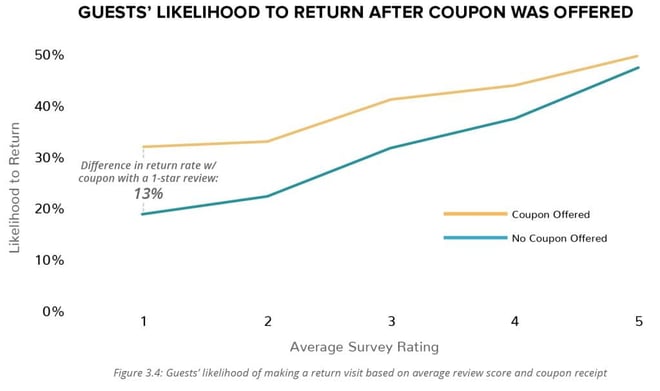
Moreover, the coupon results in an average increase in Customer Lifetime Value (CLV) of $9.20 – a 4x return – meaning that as long as a restaurant or c-store’s profit margins are greater than 25% (as we know from experience most are), then the coupon is more than worth its cost.
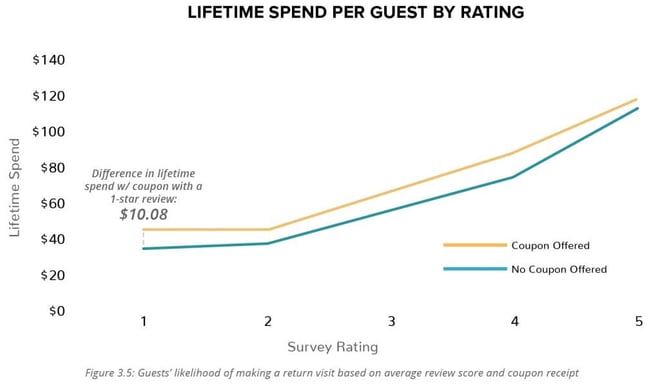
No one wants to see a 1-star review. But with a planned coupon strategy and the right technology to put control in the front-line manager’s hands, brands can flip the script and help turn negative reviews into profitable customers.
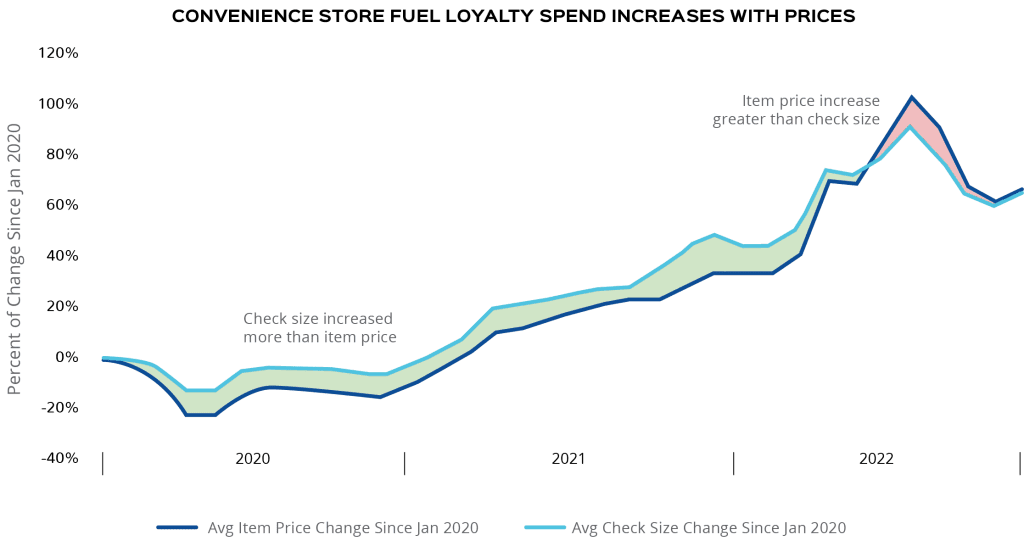
2 min read
The economic story of 2022 has been around one word: inflation. But there’s a second story that has remained under wraps: how loyalty programs keep...

4 min read
Although customer tastes are trending toward takeout, delivery customers remain a critical segment to embrace. That’s because one key learning from...
2 min read
With burger joints eager to stay current and appeal to varying tastes, guests are seeing a full range of innovative menu items. Some of these...